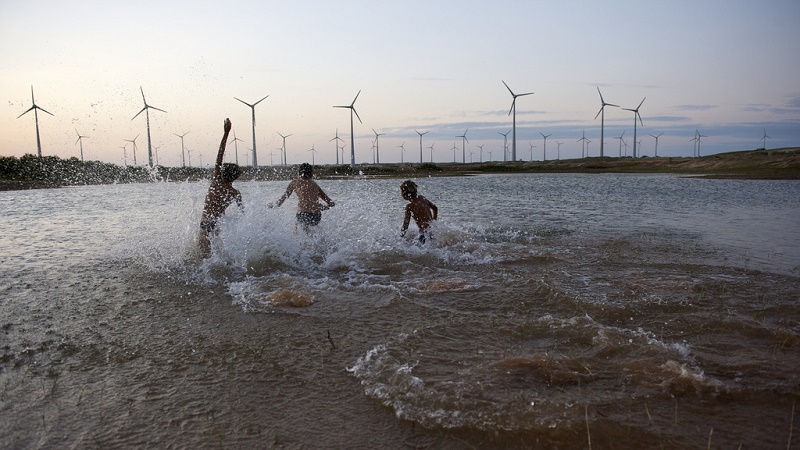Choices countries make now over future infrastructure will determine whether and how they deliver on their climate change agendas.
We need cities designed to support healthier and safer lifestyles, transportation corridors for increasing mobility whilst minimizing risks for negative environmental impact of social conflict.
We need smarter more efficient energy systems where customer needs are prioritized over sales of electricity are all choices that lay the path for low carbon and climate resilient economies.
However, these two agendas tend to proceed in parallel with little if any integration.
Whereas Ministries of Environment generally have responsibility for designing national climate plans it is Ministries of Finance or Planning that lead on national investment planning for infrastructure.
Following countries multilateral commitments, in 2015 it is essential that these agendas are brought together and designed as mutually reinforcing if the scale of investment is to be delivered.
Report: Banks eye pension funds in new climate finance drive
The Paris Agreement objective for keeping global temperature rise to well below 2 degrees C implies that from 2050 onwards, operational infrastructure will be net-zero emissions globally.
With five or more years involved in planning and preparation of infrastructure projects and the long-lived (50 – 100 years) nature of these assets, ensuring these investments are low carbon is necessary to achieve this net-zero emissions economy.
Paris came quickly on the heels of the success of the UN Sustainable Development Goals and the related Addis Ababa Action Agenda.
Together these underscored how important it would be to mobilize resources at scale for sustainable infrastructure which has been coined as the challenge of moving from Billions to Trillions.
When we look at In Latin America and the Caribbean (LAC) current annual levels of infrastructure investment amount to less than 2% of the regions GDP (compared to 6% in other regions) with most estimates indicating at least a doubling is now required.
Meeting these needs in a way that ensures LAC can deliver on its Paris and SDGs commitments signals the importance for both increasing the quantity of infrastructure investment as well as improving the quality to ensure the sustainability of such assets.
So what does this all mean for the development finance community in 2016?
From the IDB Group’s perspective we are intent on assisting governments and the private sector to translate their NDCs (Nationally Determined Contributions, pledges to reduce greenhouse gas emissions) into investment plans that can attract and mobilize resources for investment in sustainable infrastructure.
We consider the following six measures as now essential:
1 – Continued focus on the enabling policy, pricing and regulatory frameworks necessary to direct finance flows from the public and private sectors into the low carbon and climate resilient urban and rural sustainable infrastructure.
2 – Strengthening countries´ planning capabilities and country procurement systems for Public Private Partnerships for sustainable infrastructure. Essential to this will be developing countries adaptive capacity so that climate risks are evaluated early on and resilience measures readily incorporated at the construction or operational phases.
3 – Greater involvement of citizens and local communities over the implications of infrastructure choices. This will build support for decisions to focus on quality of infrastructure even where this comes at an initial higher cost, and in turn instill investor confidence that these assets will be operated effectively over the medium and longer term.
4 – Technical assistance to cover the additional transactions and lever in the expertise for design and preparation of sustainable infrastructure projects. Similarly, concessional finance will often be required to cover additional costs and reduce risks associated with the investments.
5 – Greater collaboration between financial partners from across the public and private sector spectrums through platforms where partners pool expertise and resources to co-design and pilot innovative use of blended finance.
6 – Agreement on a common set of standards, tools and investment criteria that can ensure sustainable infrastructure assets are designed, constructed and operated in a way that more closely matches the risk-appetite of providers of long-term finance.
On this last point, this week the Inter-American Development Bank Group (IDBG) is launching an initiative with Mercer Investment for building a deeper understanding of institutional investor’s strategies, and so their risk-appetite, towards sustainable infrastructure.
This in turn will help us assist LAC Governments and private sector clients with the upstream planning, preparation and financing of projects that are aligned with investor’s strategies so that their capital can be leveraged at the most affordable rate.
This is the most recent of several initiatives that the IDBG has underway in support of LAC countries efforts to finance implementation of their climate change and SDG agendas.
We hope others will join with us in the collaborative approaches required for mobilizing the scale of investment necessary to make a dent in the trillion dollar sustainable infrastructure challenge.
Amal-Lee Amin is chief of the Climate Change and Sustainability Division at the Inter American Development Bank
